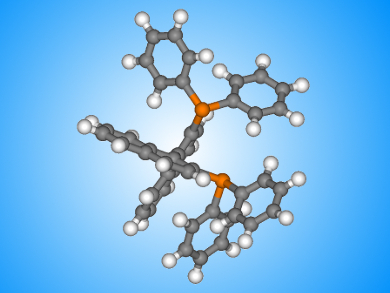Chiral BINAP (2,2′-bis(diphenylphosphino)-1,1′-binaphthyl) ligands play an important role in asymmetric organic catalysis. Due to their electronic structure, however, they can also absorb light in the UV-Vis region of the spectrum and be useful in photochemical processes.
Akiko Inagaki and Changsu Son, Tokyo Metropolitan University, Japan, have developed a photoactive palladium complex with a BINAP ligand, modified with 2-naphthyl substituents on the phosphor atoms. The complex was synthesized by adding (cod)PdMeCl (cod = 1,5-cyclooctadiene) to a solution of the BINAP-based ligand, and subsequent remvoal of a chloride ion using the silver salt AgBF4.
The palladium complex shows photocatalytic activity for the polymerization of styrenes and its activity can be switched on and off using light. The 2-naphthyl groups improve the light absorption of the complex due to their aromatic character. The researchers propose a reaction mechanism that involves the generation of an intermediate hydride complex and insertion of the monomer into the Pd–H bond. Further monomer insertions produce the polymer, and a final β-hydride elimination relases the product. According to the team, irradiation with light probably accelarates the insertion steps, which allows the control of the reaction.
- Synthesis and photocatalytic activity of a naphthyl-substituted photosensitizing BINAP–palladium complex,
Changsu Son, Akiko Inagaki,
Dalton Trans. 2016, 45, 1331–1334.
DOI: 10.1039/C5DT04228C




